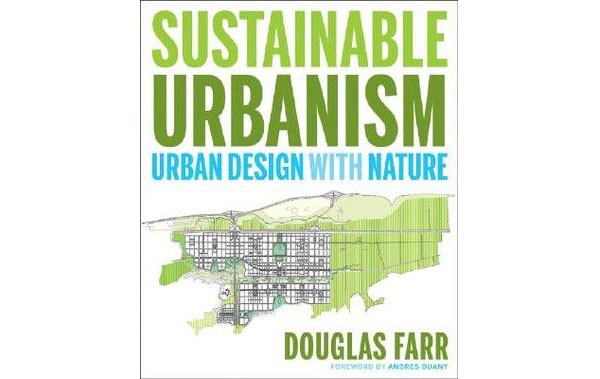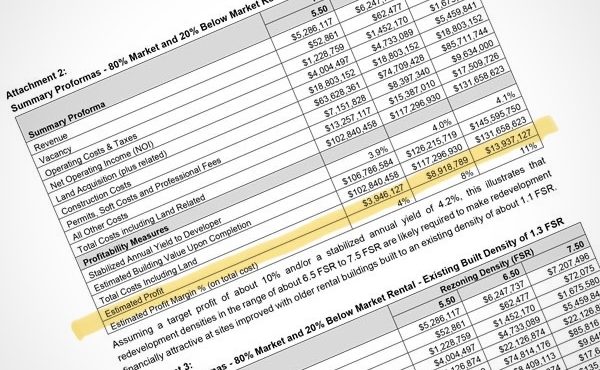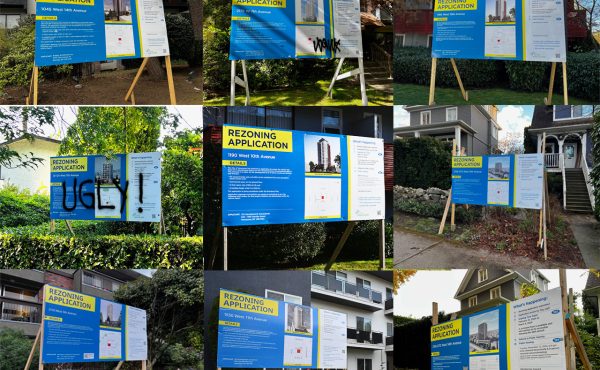Author: Douglas Farr (Wiley, 2008)
Written by Douglas Farr, the Core Committee Chair of the US Green Building Council’s relatively new LEED for Neighborhood Development (LEED-ND) branch, Sustainable Urbanism is thoroughly researched and powerfully presented. Farr’s approach is unquestionably that of a planner: discussions leap across scales, link disciplines and predict changes over time. Always backed by careful citations and detailed case studies, the book presents a valuable and convincing resource for design professionals. Not a light read for those with a casual interest in urban design, Sustainable Urbanism has the look and feel of a textbook, and should function as a reference guide for those in the industry.
Part one presents a case for Sustainable Urbanism, providing an unshakeable argument for changing the way we plan cities. This argument forms links between suburbia, obesity, auto-dependency, poverty and depression; diagrams and images give a clear picture of where American planning has gone wrong. Farr gives an interesting history of 1928’s International Congress of Modern Architecture (CIAM), an influential coalition of European architects who drastically altered 20th century urban development by prioritizing the needs of the automobile in architecture and environmental design. Looking back to the CIAM’s unprecedented impact on modern cities supports Farr’s thesis that a unified, branded and institutionalized effort is needed to initiate the genuine and lasting change that is rapidly becoming essential for cities to survive.
In part two—Implementing Sustainable Urbanism—Farr, along with a variety of design and planning professionals, builds a comprehensive guide to the implementation of greener building practices. Tools, methods and processes for navigating bureaucratic and public interfaces are described with practicality; outcomes from contributors’ vast range of experience provide enabling advice for readers. The recommendations here are detailed and professionally-aimed, right down to details such as the difference between using ‘shall’ and ‘should’ when drafting Codes, Covenants and Restrictions. This is also where Sustainable Urbanism starts to show how planning and urban design theory, in combination with other factors, give shape to the built environment. We are shown how subtle differences in regulatory language generate different results over time.
‘Emergent Thresholds of Sustainable Urbanism’, the third section of the book, gets to the core of defining sustainable urbanism, and thus appropriately presents the research of dozens of professionals, covering everything from the economic benefits of locally owned stores to public darkness and stormwater management. This is where the reference value of the book shows its potential: short sections, diagrams and charts give access to research that informs the arguments for sustainability presented here. Never stuck in the theoretical, we are instead provided with dense statistics and metrics for the planning realities of recent American history.
Finally, twenty detailed case studies illustrate some of the successes and pitfalls of the ideas in discussion. Though varied in scale and location (from the ½ acre Christie Walk in Adelaide, Australia to an 8000-acre site at Loreto Bay on the Baja), the projects described are notably all recent, the oldest being initiated in the mid-eighties, foregoing the inclusion of any of the pre-20th century building practices which, by necessity, fulfilled many of the principles Farr champions. However, the case studies do provide optimistic proof that improved urban design is both possible and already underway.
Douglas Farr’s Sustainable Urbanism: Urban Design with Nature is dense and academic. Though certainly deserving of status as a staple text and reference guide and for current and future design professionals, it lacks discussion of the beauty, complexity and idiosyncrasies of cities. My recommendation: keep this within reach on your shelf, right next to Christopher Alexander’s A Pattern Language.
***
Laura Kozak is a designer, project coordinator and camping enthusiast. Her ongoing interest in the collaborative design of the urban environment informs her teaching and research practice. She has a BFA from Emily Carr, a graduate degree in architecture from UBC and maintains an independent design practice.





